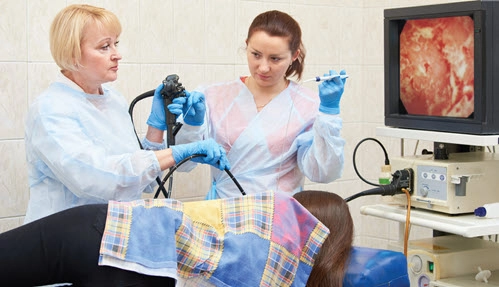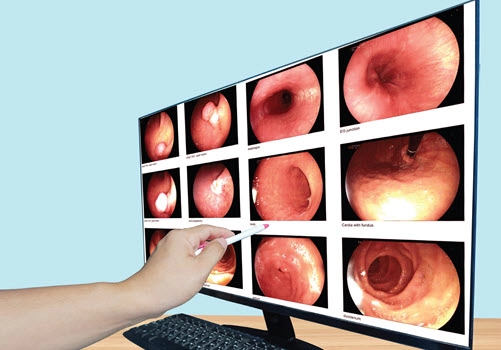Determine where the scope went to pinpoint the right code.
Most gastroenterologists perform upper GI procedures every week, which makes many coders quite familiar with the best ways to report these services. However, it’s likely that you could probably use a tune-up on your coding skills.
Check out the following four-question quiz to ensure that you report these services correctly every time.
Can You Match the Scope Location to the Code?
Question 1: What’s the difference between an esophagoscopy, an esophagogastroduodenoscopy, and enteroscopy?
Answer 1: The answer, and therefore the coding choice, will depend on the location of where the physician passes the scope, and what work was performed. Therefore, it’s a good idea to familiarize yourself with a basic checklist of which codes pair with which scope locations, as follows:

Know What Happens if “Incidental Looks” Occur
Question 2: Can you code an upper GI enteroscopy for an incidental look beyond the proximal duodenum?
Answer 2: No, this would not typically be appropriate. Patient charts and op notes are your closest allies for correctly assessing your physician’s scope and intention of endoscopy.
Focus on this: You should only report what your physician has stated as their focus or intention for the scope examination. Occasionally, a physician may take a quick look past the duodenum through the scope. However, you should steer well clear of coding this as 44361 if the physician’s documentation doesn’t show that there’s a medically necessary reason. Even the prior patient chart notes must support the gastroenterologist’s reason for going that far.
Usually, the physician will document that their “intent” is to do an EGD. Clinically, they are just being thorough when they go beyond the second portion of the duodenum. This becomes a problem when coders report all EGDs that document “beyond the second portion of the duodenum” as enteroscopies. Be on the lookout as the physician will note if they are going to perform an enteroscopy, then they will document that and will only be looking in the small bowel.
In many cases, the procedure will be scheduled as a “push enteroscopy,” and the instrument used for the procedure will be a pediatric colonoscope or a long enteroscope and it will not be the standard upper endoscope.

Know How NCCI Impacts the Codes
Question 3: Can you report an EGD with an enteroscopy?
Answer 3: Not typically, no.
For a single procedure, you need to pick the most appropriate code from the 43235 or 44360 family. Be familiar with the National Correct Coding Initiative (NCCI) edits, which do not allow payment for the base EGD code (43235) with the enteroscopy code (44360) because the standard endoscopy procedure is included in the enteroscopy code by definition.
You should also avoid coding two codes from the same family together — NCCI bundles 43235 with codes such as 43239 (Esophagogastroduodenoscopy, flexible, transoral; with biopsy, single or multiple) and 44360 with 44361 (Small intestinal endoscopy, enteroscopy beyond second portion of duodenum, not including ileum; with biopsy, single or multiple). That’s because the CPT® guidelines state that surgical/therapeutic endoscopy always includes diagnostic endoscopy.
Exception: However, in some cases there is a “1” modifier with the NCCI edits that allow the use of otherwise bundled codes under unusual circumstances. For example, if two different instruments were needed for two different indications, then it may be possible to bypass the edit with a modifier such as 59 (Distinct procedural service), by providing the appropriate documentation.
Nail Down Place of Service
Question 4: Does place of service (POS) have a bearing on your coding?
Answer 4: Your POS may not necessarily impact your code choices, but the POS is a key factor in determining the endoscopy payment you recoup. Even though push enteroscopy goes deeper, and you may think you would always get paid more for that procedure versus the EGD, it is not so.
Reasoning: The AMA considers an upper endoscopy with biopsy safe to perform in the office. Therefore, your gastroenterologist may perform the procedure in a nonfacility setting. Since there is a significant additional practice expense payment for 43239, you’ll actually earn more for the EGD in the office than you earn for the push enteroscopy — which can only be performed in a facility setting — even though the push enteroscopy goes farther.
The difference: Medicare assigns 4.62 relative value units (RVUs) for 44361 in both the facility and non-facility settings. However, code 43239 has only 4.02 RVUs in a facility setting but 11.49 in a non-facility setting (based on the 2021 Medicare Physician Fee Schedule).
Note that if a biopsy is performed during enteroscopy, even if the biopsy is from the esophagus, stomach or duodenum, code 44361 still applies.
